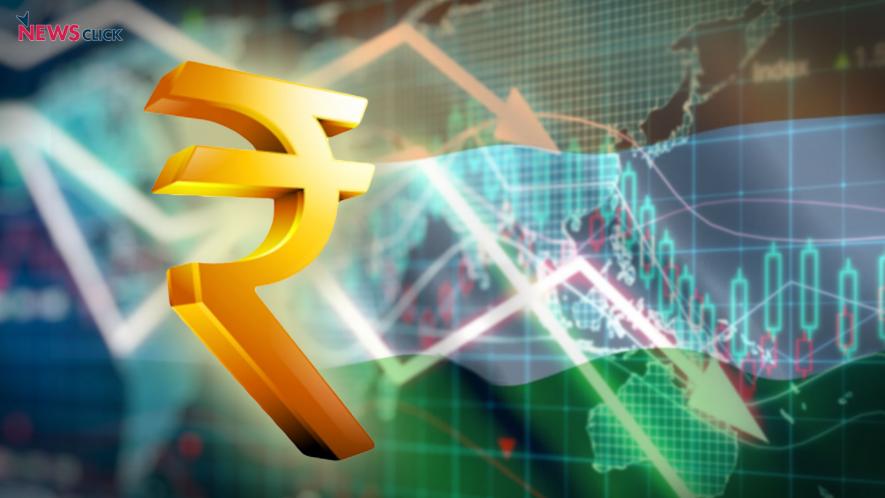Economic Growth Slows, But BJP Govt Clings to Fiscal Conservatism

While India’s economic growth has slowed and the jobs scenario looks bleak, the BJP-led central government in India is clinging to contractionary fiscal conservatism which would affect employment generation adversely and harm public provisioning of critical services.
According to the Economic Survey released by the Union government on Monday, figures from the Central Statistics Office (CSO) show that GDP growth rate is expected to decelerate from 7.1 per cent in 2016-17 to 6.5 per cent in 2017-18. The GDP had grown by 7.5 per cent and 8 per cent respectively in 2014-15 and 2015-16.
The growth rate of Gross Value Added (GVA) in agriculture and allied sectors is expected to come down from 4.9 per cent in 2016-17 to 2.1 per cent in 2017-18, while industrial growth rate is estimated to be 4.4 per cent in 2017-18 compared to 5.6 per cent the previous year. Industrial growth was significantly higher at 7.5 per cent and 8.8 per cent respectively during 2014-15 and 2016-17.
Services are expected to pull up overall growth figures by growing at a pace of 8.3 per cent in 2017-18. Among the sub-components of the service sector, ‘public administration, defence and other services’ are expected to clock the highest growth – 9.4 per cent. Public administration, defence and other services had grown at 11.3 per cent the previous year owing to higher pay-outs in salaries and arrears due to the implementation of the Seventh Pay Commission recommendations. Its effect would expectedly wane in the current year.
The Economic Survey also admits that the growth slowdown began even before demonetisation – from the first quarter of 2016-17 onwards – something that observers have pointed out earlier. The disastrous demonetisation exercise worsened the slowdown – with the final quarter of 2016-17 and the first quarter of 2017-18 recording GDP growth rates of 5.6 per cent and 5.7 per cent respectively.
The growth slowdown has come even as growth in employment has remained below 1 per cent per annum for several years now.
All these have, however, not stopped the BJP government from continuing on the destructive path of fiscal conservatism with its pathological opposition to government expenditure.
Figures show that the total expenditure by the central government as a percentage of GDP has fallen continuously, from 15.8 per cent in 2009-10 to 13.9 per cent in 2013-14 (the term of the UPA-II), and further to 12.7 per cent in 2017-18. In other words, there is remarkable continuity in the basic economic policy trajectory followed by the Congress-led UPA and the BJP-led NDA.
The centre’s tax revenues as a percentage of GDP have been stagnating for several years now. This was 7 per cent in 2009-10, touched 7.5 per cent in 2012-13 and fell again in the subsequent years to touch 7.3 per cent in 2016-17.
Investment, an important driver of economic growth, has fallen in proportion to India's GDP, from 39 per cent in 2011-12 to 33.3 per cent. Investment originating in the private sector (gross fixed capital formation in the private sector) fell from 27 per cent in 2011-12 to 21.9 per cent.
And yet, the government has chosen to place fond hopes on the private sector to generate growth and employment.
Even as tax revenues have failed to increase significantly, the centre has managed to reduce the fiscal deficit – from 6.5 per cent in 2009-10 to 3.5 per cent in 2016-17 – by reducing, in proportionate terms, both plan expenditure and non-plan expenditure.
Even the expenditure by ‘General Government’ – the total expenditure by the central government and the state governments – has declined as a percentage of GDP, from 28.6 per cent in 2009-10 to 26.1 per cent in 2017-18.
Countries where the vast majority of people enjoy decent living standards have dramatically higher proportions of GDP accounted for by government expenditure. As of 2015, government expenditure was as large as 57 per cent of the GDP in Finland, 56.6 per cent of the GDP in France and 54.8 per cent of the GDP in Denmark. In the UK the figure was 42.4 per cent. Even in the United States, where social security is widely known to be inadequate, government expenditure was as much as 37.6 per cent of the GDP.
It is no wonder, then, that the kind of policies that the Congress and the BJP have followed in India have led to severely inadequate public funding in vitally important areas such as education, health, public distribution system, social security and the MNREGA.
The kind of thinking outlined in the Economic Survey, unfortunately, threatens to take the country further along this ruinous path.
Get the latest reports & analysis with people's perspective on Protests, movements & deep analytical videos, discussions of the current affairs in your Telegram app. Subscribe to NewsClick's Telegram channel & get Real-Time updates on stories, as they get published on our website.























